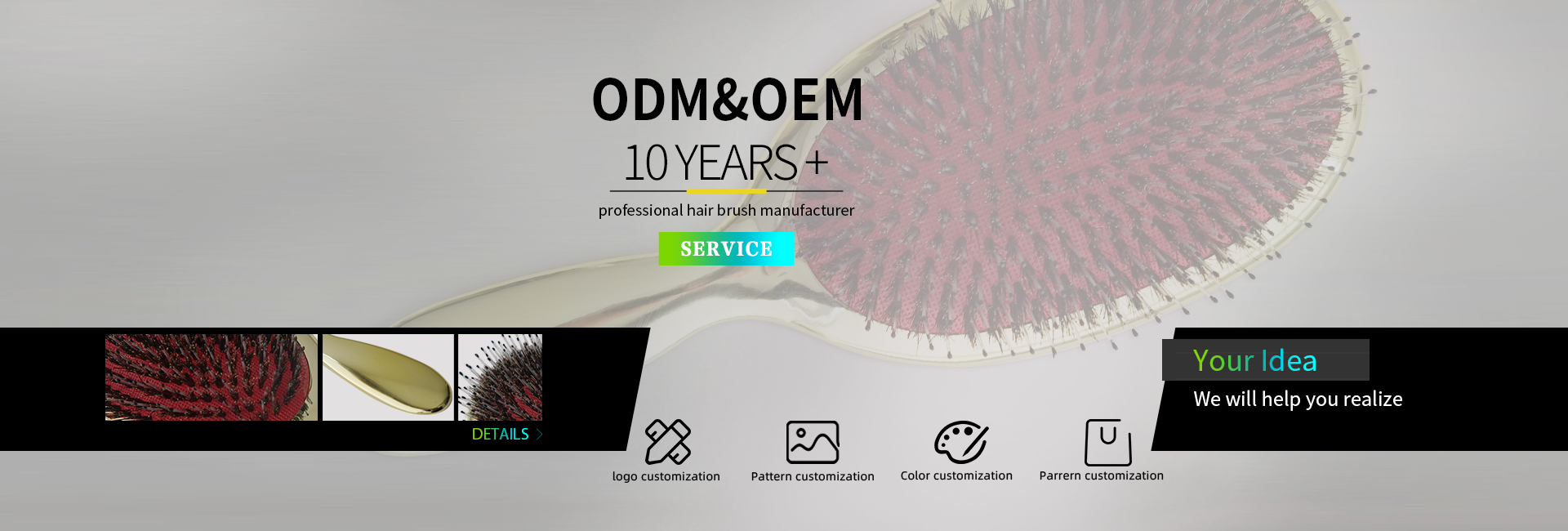When it comes to hair styling and grooming, understanding the different types of hair combs is essential. Each comb shape is designed for a specific purpose—detangling, parting, adding volume, or precision styling. While materials like wood, bamboo, plastic, acetate, or metal affect durability and comfort, the most effective way to classify types of hair combs is by shape and design.
This comprehensive guide introduces the most common hair comb types, explains their uses, and highlights which hair textures and styles they work best for.
Common Materials in Hair Combs
Before diving into the main types of hair combs, it’s worth mentioning the common materials:
- Wooden combs – Gentle on hair, reduce static, eco-friendly.
- Metal combs – Extremely durable, heat-resistant, great for use with blow-dryers.
- Plastic combs – Lightweight, affordable, widely available.
- Cellulose acetate combs – Smoother and stronger than plastic, heat-resistant.
- Bamboo and eco-friendly plastics – Sustainable alternatives gaining popularity.
(Image suggestion: a lineup of combs made from different materials.)
Double-Sided Combs – A Versatile Type of Hair Comb
Shape & Features: Two sides, usually one with fine teeth and the other with wide teeth.
Use: Perfect for switching between smoothing and detangling, commonly used in barbershops.
Best For: All hair types, particularly useful when working with both thick and fine sections.
Barber Combs – Professional Cutting Comb Type
Shape & Features: Slim, long combs with both fine and wide teeth. Some include measurement guides.
Use: Designed for precision cuts, clipper-over-comb techniques, and fading.
Best For: Short to medium straight or wavy hair.
Fine-Tooth Combs – Precision Styling Type
Shape & Features: Closely spaced teeth, usually 6–8 inches long.
Use: Best for sleek styling, creating clean parts, and evenly distributing product.
Best For: Straight, fine, or short hair. Avoid on thick tangles or curls.
Wide-Tooth Combs – Gentle Detangling Type
Shape & Features: Thick teeth with wide spacing.
Use: Excellent for detangling wet hair or curls without breakage. Recommended for applying conditioner in the shower.
Best For: Curly, wavy, thick, or long hair.
Rat-Tail Combs – Sectioning and Parting Comb Type
Shape & Features: Fine teeth with a long, pointed handle (the “tail”).
Use: Ideal for precise parting, braiding, sectioning for coloring, or updos.
Best For: Straight or wavy hair needing clean, sharp divisions.
Rake Combs – Heavy-Duty Detangling Type
Shape & Features: Extra-wide teeth with a long handle, resembling a garden rake.
Use: Works through very thick or matted hair with minimal pulling.
Best For: Coarse, curly, or extremely thick hair.
Teasing Combs – Volume-Adding Comb Type
Shape & Features: Closely spaced rows of short teeth, often layered.
Use: Designed for backcombing to add volume and texture.
Best For: Fine or flat hair that needs lift and fullness.
Detangling Combs – Everyday Tangle-Free Comb Type
Shape & Features: Wide, rigid teeth designed for strength and glide.
Use: Removes knots gently on wet or dry hair. Often marketed as shower combs.
Best For: All hair types, especially curly or thick textures.
Pocket Combs – Portable Comb Type
Shape & Features: Small and compact, sometimes foldable.
Use: Perfect for quick touch-ups on the go.
Best For: Any hair type—convenience rather than specialization.
Pick (Afro) Combs – Volume-Lifting Comb Type
Shape & Features: Long prongs with a handle, resembling a fork.
Use: Used for lifting and shaping curly, coily, or afro-textured hair, adding volume at the roots.
Best For: Curly, coily, and afro-textured hair.
Comparison Table: Types of Hair Combs
| Comb Type | Defining Features | Best Uses | Suitable Hair Types |
|---|---|---|---|
| Double-Sided Comb | Fine & wide teeth in one tool | Versatile styling, detangling & smoothing | All hair types |
| Barber Comb | Professional comb with measurements | Precision cuts, fades, parting | Short to medium, straight/wavy hair |
| Fine-Tooth Comb | Very closely spaced teeth | Sleek looks, clean parts, product spreading | Straight, fine, or short hair |
| Wide-Tooth Comb | Widely spaced thick teeth | Wet hair detangling, curl care | Curly, wavy, thick, or long hair |
| Rat-Tail Comb | Fine teeth + pointed tail handle | Parting, sectioning, braiding | Straight/wavy hair, detail styling |
| Rake Comb | Extra-wide teeth with handle | Heavy detangling of thick or matted hair | Very thick or curly hair |
| Teasing Comb | Layered teeth for backcombing | Adding lift, creating volume | Fine or flat hair |
| Detangling Comb | Rigid wide teeth | Gentle everyday detangling | All hair types (esp. curly/thick) |
| Pocket Comb | Compact, foldable | On-the-go touch-ups | Any hair type |
| Pick (Afro) Comb | Long prongs like a fork | Lifting curls, afro shaping | Curly, coily, afro-textured hair |
Conclusion: Choosing the Right Comb Type
With so many types of hair combs available, the best choice depends on your hair texture, length, and styling needs. Fine-tooth combs create sleek looks, wide-tooth combs detangle curls, rat-tail combs allow precision parting, and afro picks add volume. By matching the right comb type to your hair, you’ll style more effectively while preventing breakage and improving hair health.
Whether you’re a professional stylist or simply looking to improve your daily routine, investing in the right types of hair combs can make a noticeable difference in both results and hair care.
